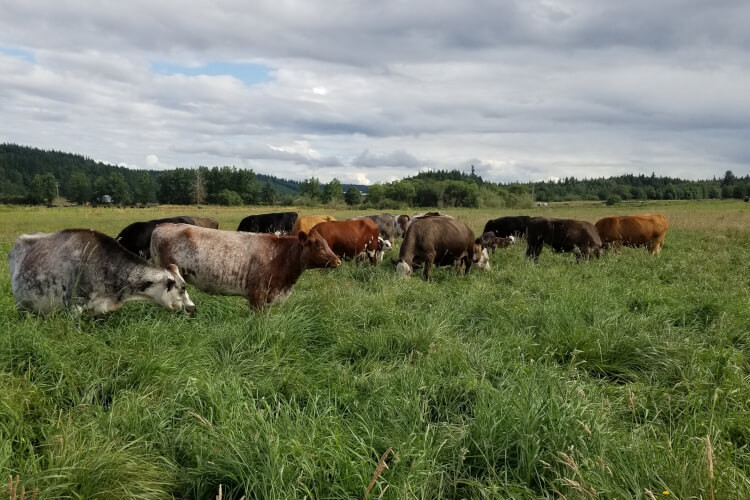Winter Chicks
posted on
January 26, 2022

Winter Chicks - We haven't tried this before!
Thinking back through 2021 as we plan for the new year, we were pleased with how several of our experiments/projects turned out. One we shared with you last week - the Solar Livestock Water System.
Another new idea we tried was starting a new layer flock in the Fall instead of the Spring! We have always hatched and ordered chicks as soon as we could in the Spring, usually around March 1st. But sometime last summer we decided to increase our egg production and jumped into an experiment of brooding chicks over the winter.

The chicks arrived at the beginning of November and the Farmhands, as usual, got to pick out a few to have in the house. See the photos above. Farmhand Eli is showing off his careful chick holding skills - his chick is called Fuzzy. Farmhand Vera's chick is called Banana. Don't worry, the chick didn't actually eat any of the blue lollypop (not really ideal day-old-chick nutrition), but Vera thought it was worth a try. I may or may not have let her eat the rest of the lollypop after that...you have to build up your immune system somewhere :)

The rest of the chicks went into our brand new brooder house, pictured here. It's the first time we've had a walk-in brooder and it was a great success! In the past we've used several knee-height, more enclosed brooders that worked fine for the warmer months.
Not only was the new walk-in brooder easier for Farmer Martin to manage as he tended the chicks, but it provided more space and light for the chicks during the darker months. And it made for a great playhouse for the Farmhands on rainy days!

The brooder "house" itself is a simple box, enclosed and roofed with chicken wire, and deep bedded with wood shavings. What made it really work well was the new "hover" Martin and Eli built. The design is called an Ohio Brooder.
The hover is the wooden box structure Vera is reaching under. It contains the heat lamps and was set low to the ground when the chicks were tiny. They would cuddle under it for warmth, venture out for food and water, and then zip back under like it was a mother hen. Later, as the chicks got bigger and needed more space and less heat, it was easy to raise the hover on cinder blocks and bricks (staple construction materials around our farm, almost as important as baling twine and duct tape).
As you can see in these pictures, as the chicks grew bigger they could jump up on the hover so it also provided additional floor space and chick entertainment. Pictured here, the chicks are about 8 weeks old, fully feathered, and ready to join the full sized hens in the warm and dry hoophouse we use for winter chicken shelter.
Moving day is a project the whole family gets to participate in! It's always fun to watch the chicks charging around, exploring their new larger space. We usually move chickens towards evening so they have a short time to get settled in and then wake up in their new home. It seems to help them better adapt to the change, but the low light makes for blurry photos.

The chicks, now actually "pullets," have a separate area from the older hens as they'll be a separate flock when they go out onto pasture this Spring. Time to build another Ritz Cluckin!

These sweet little girls continue to grow fast. They should be laying in another 8-10 weeks! Interestingly, they are progressing towards laying as the daylight is naturally lengthening. Spring hatched chicks are normally going into lay just after the Summer Solstice when the daylight starts to decrease. We are interested to see how the change of seasons affects the lay cycle. The experiment continues. Stay tuned!




